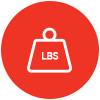A metal roof might seem like a counterintuitive choice for the literal roof over your head, but there are many compelling reasons to make that choice. A metal roof beats out conventional or traditional roofing materials in several ways.
 Half-Life
Half-LifeFirst, properly installed, a metal roof is expected to survive longer than a roof made out of traditional wood shingles, even if they’re made out of more advanced and expectedly fireproof materials. While metal roofs can wear down due to external forces, causing them to peel, chip, fade, scratch or chalk, they’re still expected to last about 30 years at minimum, and depending on the material can last between 40 and 70 years. By comparison, traditional asphalt roofing materials have an estimated life expectancy of roughly 12 to 20 years. Unlike conventional roofing materials, metal is also resistant to fire, mildew, insects, mold and rot.
 Weight
WeightSheet-metal roofing is extremely lightweight compared to conventional roofing materials, and it’s much more effective at shedding water and snow. Metal roofing materials run from around 50 to 150 pounds per square, and often come in multiple-shingle sections that are more efficient than single-tile roofing materials. By comparison, concrete tiles can weigh as much as 900 pounds per square, while even conventional tiles can run some 750 pounds per square. That not only adds weight but also stress to a home’s structure.
 Fire Resistance
Fire ResistanceMetal roof materials won’t burn — that’s why most metal roof materials have a Class A fire rating, meaning they’re the most fire-resistant roof you can install. Keep in mind that while metal roofs are great at guarding against an external fire, such as wildfires or flying sparks or embers, they’re not ideal for fires that start inside a home because firemen might have to cut through a metal roof to put out a fire. But as long as you’ve taken the proper fire precautions inside a home, including installing smoke detectors and other defenses, a metal roof can do the job just fine.
 Energy Efficiency
Energy EfficiencyMetal roofs can save as much or more money as traditional roofing materials, because they reflect radiant heat from the sun, which minimizes midday heat gain. That means less money being spent on running the air conditioner or other cooling technology. To gain energy efficiency, a metal roof can also be applied over rigid-foam insultation or engaged over a dead-air space between the metal and the roof deck to increase energy efficiency.
 Maximum Shedding of Rain and Snow
Maximum Shedding of Rain and SnowMetal roofing is infamously impervious to rain and snow because of the ways the metal paneling interlocks, the way this type of roofing absorbs and conducts heat, and because the panels themselves are hard and slippery.
 The Few Drawbacks
The Few DrawbacksMetal roofing is a very good choice for many homeowners, but it’s worth noting that it has a few drawbacks. The biggest one is initial cost. While metal roofing is equivalent in cost to conventional roofing materials, its long-term value comes from its durability and long life. Homeowners who live in weather-heavy areas and are particularly sensitive to noise may also find metal roofing less pleasant, although noise can be controlled with structural barriers and insulation. Finally, metal roofing is susceptible to certain structural limits — large hailstones can dent a metal roof, while the organic expansion and contraction of metal as it warms and cools can take a toll over time.
 The Take-Away
The Take-Away